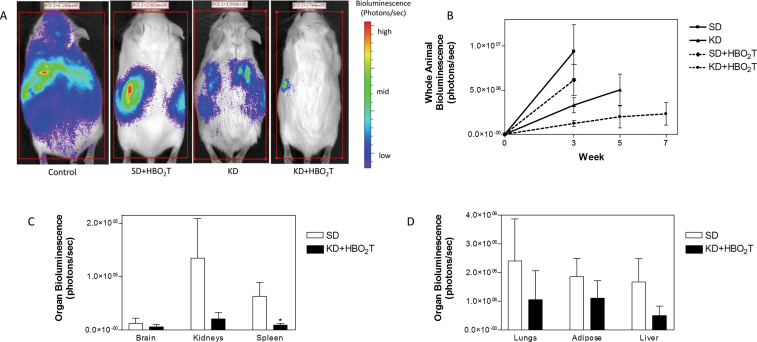Fig. 6.
The KD and HBO2T are synergistic in reducing systemic metastatic cancer in the syngeneic VM mouse model. VM-M3/Fluc tumor cells were implanted subcutaneously and systemic organ metastasis was evaluated ex vivo using bioluminescent imaging as described previously (242,243). Tumor growth was slower in mice fed the KD than in mice fed a standard high carbohydrate diet. (A) Representative animals from each treatment group demonstrating tumor bioluminescence at day 21 after tumor cell inoculation. Treated animals showed less bioluminescence than controls with KD + HBO2T mice exhibiting a profound decrease in tumor bioluminescence compared with all groups. (B) Total body bioluminescence was measured weekly as a measure of tumor size; error bars represent standard error of the mean. KD + HBO2T mice exhibited significantly less tumor bioluminescence than control animals at week 3 (P < 0.01; two-tailed student’s t-test) and an overall trend of notably slower tumor growth than controls and other treated animals throughout the study. (C and D) Day 21 organ bioluminescence of standard high carbohydrate diet and KD + HBO2T animals (N = 8) demonstrated a trend of reduced metastatic tumor burden in animals receiving the combined therapy. Spleen bioluminescence was significantly decreased in KD + HBO2T mice (*P < 0.02; two-tailed student’s t-test). Reprinted with permission from Poff et al. (243).

